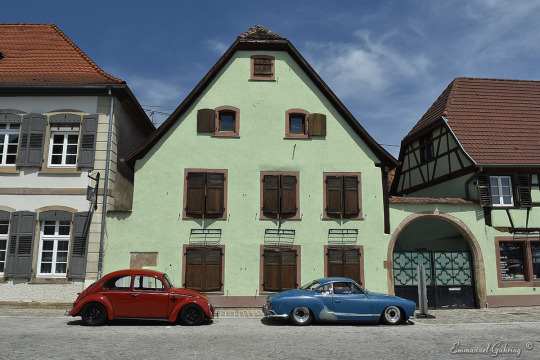#Molsheim
Text






Bugatti Tourbillon, 2024. The Molsheim-based hypercar maker has revealed their latest model, a V16 hybrid with a total output 1,775hp. The 986hp combustion engine is paired with three e-motors, two at the front and one at the rear, which can provide 37 miles of full electric range. Performance of the V16 hybrid includes 0-100 km/h (62 mph) in 2.0 seconds, the ability to reach 400km/h (248mph) in "less that 25 seconds" and a top speed of 445 km/h (277 mph) with the "speed key" engaged. A tourbillon is a device invented in 1801 that is still added to high-end timepieces to increase accuracy. Unusally the five-dial gauge instrument cluster is almost entirely analogue and is made by Swiss watchmaker. Production will be limited to 250 units that will cost from €3.8 m ($4.1 m) each.
#Bugatti#Bugatti Tourbillon#2024#new cars#V16#mid-engine#hybrid#hypercar#hybrid hypercar#limited edition#Molsheim#butterfly doors
173 notes
·
View notes
Text

Jewish wedding
Polish vintage postcard, mailed in 1916 to Molsheim, France
#vintage#molsheim#tarjeta#france#polish#briefkaart#jewish#1916#postcard#photography#postal#wedding#carte postale#sepia#ephemera#historic#ansichtskarte#postkarte#postkaart#mailed#photo
10 notes
·
View notes
Text




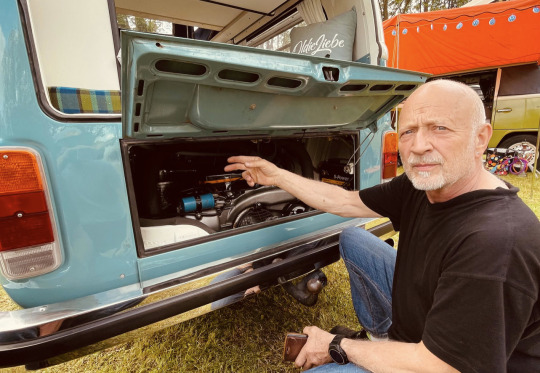


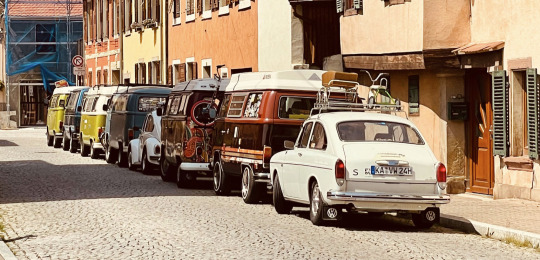




COXSHOW 2023 Molsheim – Was eine fetzn Gaudi
Da fährt man ahnungslos mit einem breiten Grinsen dem luftgekühlten Geruch hinterher und landet auf einem umfunktionierten Sportplatz in Frankreich.
Das illustre Molsheim erwartetet mich mit vielen Blechgrazien, Benzingeruch und eine ganze Sippe genialer Leute.
Es war ein Traum ✌🏼
Von Camping bis Ausfahrt, von Wetter bis viel Spaß, von Wippe bis Wahnsinn, von Schrauben bis Tanken.
Schaut mal rein: COXSHOW 2023 Molsheim
#coxshow#coxshow 2023#treffen#event#shoe#vw#volkswagen#aircooled#luftgekühlt#frankreich#france#oldieliebe#bus#bulli#vanagon#bug#käfer#cox#molsheim#straßburg#camper#camping#t2#baywindow#van
12 notes
·
View notes
Text

Bugatti "Type 35" Baby II Pursang
n° 218 of 500
Scale ¾
Zoute Sale - Bonhams
Estimated : € 80.000 - 100.000
Unsold
Zoute Grand Prix 2022
Knokke - Zoute
België - Belgium
October 2022
This luxurious child's car model type Bébé II was created in 2019 in Molsheim by The Little Car Company in association with Bugatti for the 110th anniversary of the brand. The Baby II is a replica of the legendary Bugatti Type 35, it retains the playfulness of the original Baby, revisited with 21st century technology. Frame n° 218 of the initial 500 created, ¾ scale of the original one, colour blue and leather seats.
Hand formed aluminium bodywork, Michelin tires, electrical engine that can go up to 30km/H, headlights, battery, horn, rear-view mirror, hand brake, adjustable pedal board, shock absorber. This model has never been used , delivered in its original transport case. 2,8 meters long and 1 meter wide.
#Bugatti#Type 35#Baby II Pursang#110th anniversary#The Little Car Company#luxury child's toys#classic car replicas#Molsheim#Bonhams
3 notes
·
View notes
Text
Bugatti Blocks Balderdash!

View On WordPress
0 notes
Text
Bugatti Divo: l'hypercar di lusso made in Molsheim
La Bugatti Divo è un’auto di lusso fatta in Francia, a Molsheim. È stata presentata nel 2018. È più potente della Chiron, l’auto precedente di Bugatti.
Ha uno stile che attira e prestazioni eccezionali. Il suo motore W16 produce 1.500 CV. Può andare da 0 a 100 km/h in appena 2,4 secondi.
Il prezzo iniziale è di 5 milioni di euro. Questo la rende molto ricercata dai collezionisti.
Punti…
#Bugatti Divo Italia#Bugatti Divo specifiche#Design Bugatti Divo#Eleganza automobilistica#Hypercar di lusso#Molsheim Bugatti#Motori di lusso#Prestazioni Bugatti Divo#Supercar di lusso#Tecnologia Bugatti
0 notes
Text

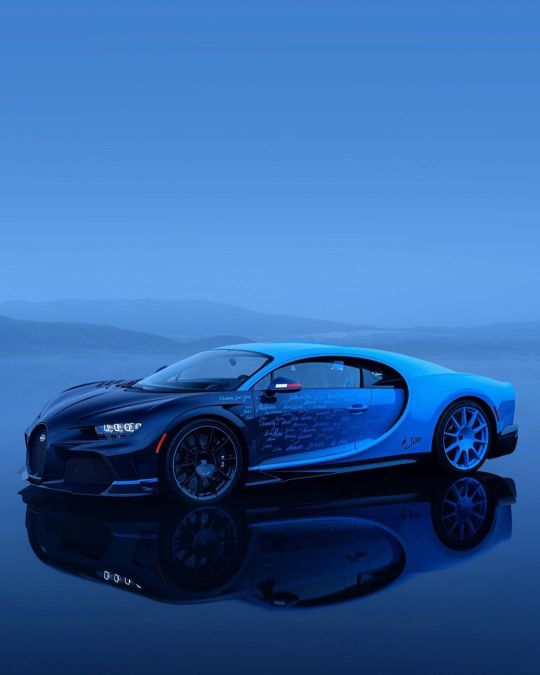
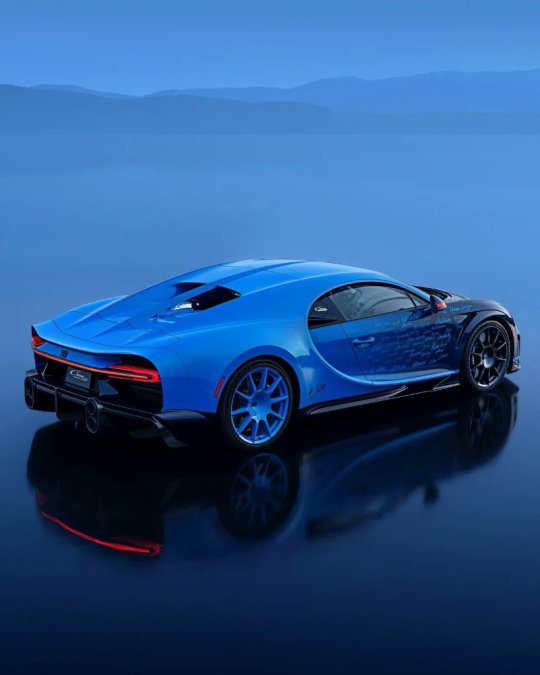

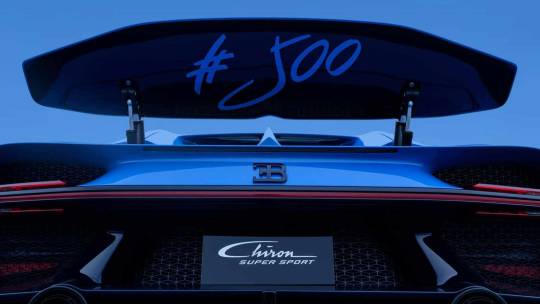

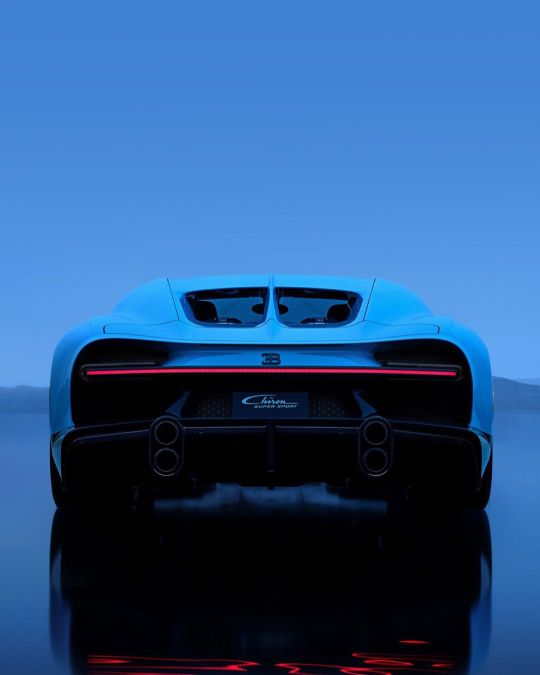
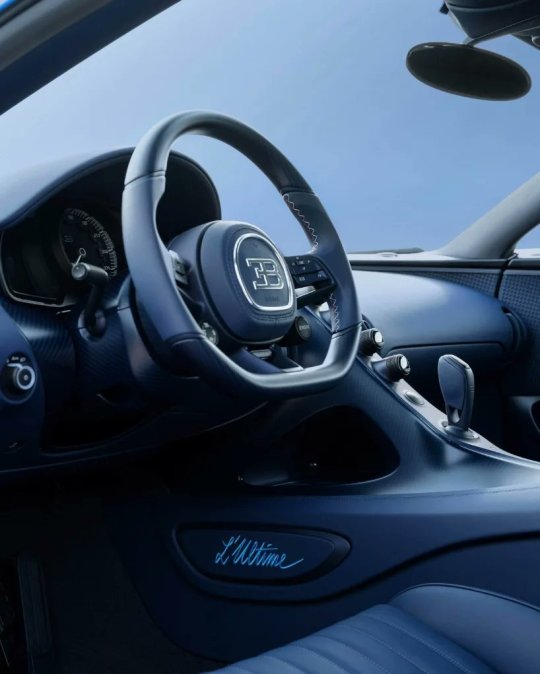


Bugatti Chiron "L'Ultime" !
The 500th and final example of the Chiron model to roll out of the Molsheim factory.
It's a fitting farewell that captures a defining legacy that will forever be etched in automotive history.
#art#design#sportacrs#sportacr#supercar#supercars#hypercar#luxury cars#luxury lifestyle#luxurycars#sport cars#bugatti#chiron#bugatti chiron#ultimate#billionaire
152 notes
·
View notes
Text



Launched a century ago, the Bugatti Type 35 didn’t just make a single impact—it revolutionized the racing world with its innovative design and engineering. The car became legendary not only for its initial capabilities when it debuted in 1924 but also for the continuous improvements Bugatti implemented throughout its production. Ettore Bugatti was one of the first automobile manufacturers to grasp the marketing potential of winning races on Europe’s renowned circuits and road tracks, which brought considerable publicity to his brand. Confident as he was in the capabilities of his new car, even Bugatti could not have predicted that the Type 35 would become the most successful race car in history, achieving 2,500 victories during its active racing career.
The first Type 35, released in 1924, was equipped with a 1,991cc eight-cylinder engine, delivering 90 PS in race trim. By early 1926, Bugatti had increased the engine size to 2,262cc for the Type 35T, named after the famous Targa Florio road race in Italy, which it won, with two smaller-engined Type 35s finishing close behind. Despite this success, Ettore Bugatti realized that to stay ahead of the competition, he needed more than just increased engine displacement. He knew that the future of performance lay in forced induction, even though he was initially not a fan of superchargers, which were seen as inefficient at the time.
“It’s no secret Ettore Bugatti preferred naturally aspirated engines and was not an early enthusiast of supercharging due to its perceived inefficiency,” says Luigi Galli, Specialist for Heritage and Certification at Bugatti. “However, what’s less well known is that Bugatti was forward-thinking about the potential of forced induction, experimenting with superchargers even before the Type 35 debuted at its first race in Lyon in August 1924. In fact, Bugatti applied for French patent number 576.182 on January 22, 1924, for a ‘Compresseur ou pompe à palettes,’ a rotary vane supercharger design that could provide extra power on demand by forcing pressurized air into the carburetor. If Bugatti was going to use a supercharger, he was determined to innovate in his own way.”
As a result, Ettore Bugatti, alongside the Italian engineer Edmond Moglia, developed a unique three-rotor Roots-type supercharger, differing from the common two-rotor designs of the time. This supercharger was strategically mounted on the engine’s offside, which allowed it to warm up more quickly and improve overall engine cooling—a principle that remains relevant in modern engine design. The Type 35TC, where “TC” stands for Targa Compressor, was introduced in late 1926. It evolved into the Type 35B in 1927, featuring a larger radiator and cowling, known as the ‘Miramas’ design, which enhanced cooling capabilities. This configuration enabled the Type 35B to produce up to 130 PS, achieving speeds over 205 km/h (150 mph).
By late 1930, further refinements led to what many consider the ultimate version of the Type 35B. This final iteration featured a twin-cam, two-valve-per-cylinder engine, a twin fuel filler cap, improved suspension, wheels, brakes, and tires, as well as a lower-mounted supercharger relief valve. Bugatti’s relentless pursuit of perfection extended to optimizing every element of the combustion system, from sculpted pistons and cylinder heads to the use of aviation-grade fuel, which boosted the output to 140 PS.
Today, at Bugatti’s atelier in Molsheim, each Bugatti model is hand-assembled with the same meticulous attention to detail that Ettore Bugatti applied to the Type 35. A century later, Bugatti’s engineers and designers continue to push the boundaries of automotive excellence, upholding a legacy of innovation and performance that began with the groundbreaking Type 35.
8 notes
·
View notes
Text

Molsheim
📸 Minnie Heimet
2 notes
·
View notes
Text
At the Pinnacle of Wonders: The Legendary Tale of Bugatti
Bugatti is renowned in the automotive industry as an unparalleled luxury and performance brand. The French sports car manufacturer has earned a massive fan base worldwide for its unique designs, revolutionary technologies, and top-tier performance.
Roots and History of Bugatti
Established in 1909 in the town of Molsheim, Germany, by Italian-French automobile designer Ettore Bugatti, the brand has consistently focused on not only perfecting performance and speed in its cars but also placing a significant emphasis on aesthetics and elegance.
Securing its first major success in the 1920s with the Bugatti Type 35, the brand gained recognition for its unique design and lightweight construction. The Type 35, with its distinctiveness and agility, dominated over 1000 races, solidifying Bugatti's legendary status.
However, Bugatti's history extends beyond racing triumphs. In 1998, Volkswagen Group's acquisition marked a new era for Bugatti, leading to the creation of groundbreaking models like the Bugatti Veyron.
Bugatti Veyron and Chiron: The Perfect Fusion of Luxury and Performance
When Bugatti introduced the Veyron in 2005, it set a new standard worldwide. With a 1001 horsepower engine and a top speed of 400 km/h, the Bugatti Veyron held the title of the fastest and most powerful production car of its time. The Veyron not only redefined speed but also elevated the concept of luxury with its impeccable design and specially crafted materials.
Upon the Veyron's successor, the Bugatti Chiron continued this legendary tradition. With 1500 horsepower and a maximum speed of 420 km/h, the Chiron remains a celebrated legend in the automotive world. Its luxurious interior design and handcrafted details provide a first-class experience for both the driver and passengers.
The Future: Bugatti's Vision
Bugatti aims to continue pushing boundaries in the future. Adapting to the trend of electrification, Bugatti's upcoming models will merge high performance, elegance, and eco-friendly technology. This approach will allow the brand to marry its rich history with the expectations of the modern world, bringing a breath of fresh air to the automotive industry.
Bugatti's unique design, outstanding performance, and luxurious details tell an iconic story that continues to captivate automotive enthusiasts and luxury car aficionados. As Bugatti persists in the automotive world, we eagerly anticipate the brand's future innovations and successes.
2 notes
·
View notes
Text
Celebrating an enduring legacy at the 40th anniversary Bugatti Festival in Molsheim
The 40th anniversary Bugatti Festival – each year, on the weekend closest to the birthday of Ettore Bugatti – 15 September 1881 – the town of Molsheim in Alsace is transformed with a three-day celebration of Ettore’s incredible legacy. The Bugatti Festival, organized by the Enthousiastes Bugatti Alsace (EBA), is a pilgrimage of Bugatti fans from all over the world, descending on the place that…

View On WordPress
#automobile history#automotive#automotive heritage#Bugatti#Bugatti festival#Ettore Bugatti#lifestyle
6 notes
·
View notes
Text

Jewish wedding
Polish vintage postcard, mailed in 1916 to Molsheim, France
#historic#briefkaart#jewish#postkaart#carte postale#ephemera#tarjeta#photo#france#postcard#postal#mailed#wedding#postkarte#ansichtskarte#molsheim#polish#1916#sepia#photography#vintage
3 notes
·
View notes
Text


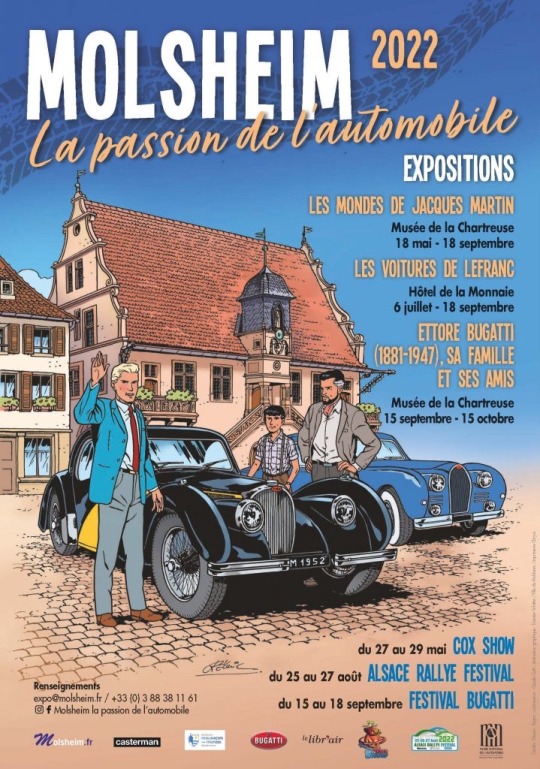
Lefranc on the poster of the 2022 Molsheim "La passion de l'automobile" exhibit, original art by Régric
6 notes
·
View notes
